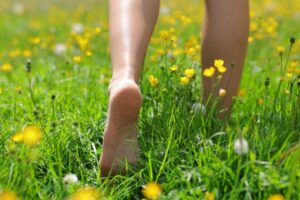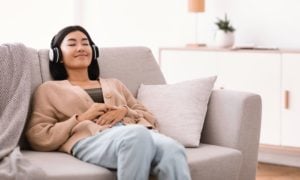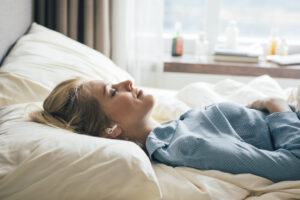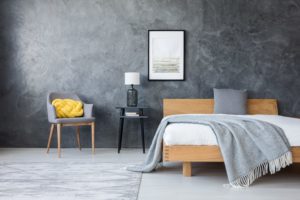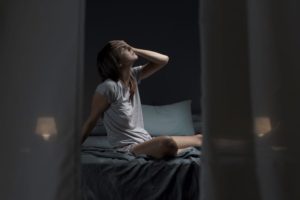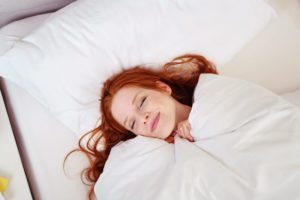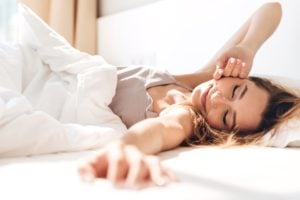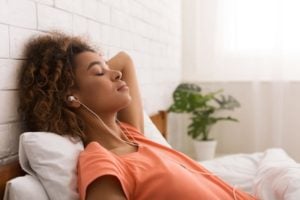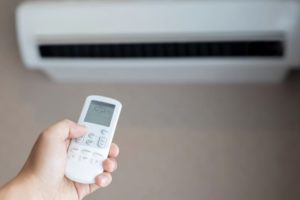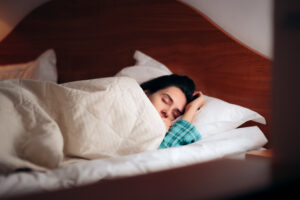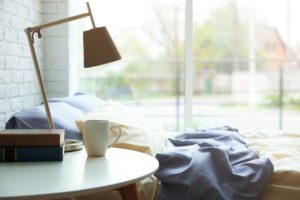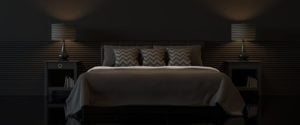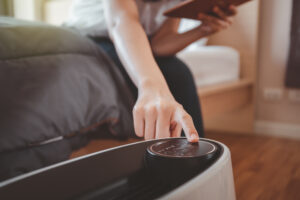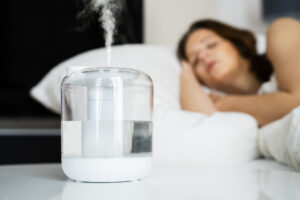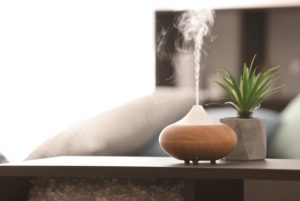Humidity and Sleep
The level of humidity in your home can influence many aspects of your personal health, including sleep. Maintaining healthy humidity levels can make sleeping in your bedroom much more comfortable.
We cover how humidity impacts sleep, the best humidity levels for sleep, and tips to optimize humidity levels in your bedroom.
How Does Humidity Affect Sleep?
In a healthy adult, sleep cycles consist of four distinct stages . The first two non-rapid eye movement (NREM) stages are considered light sleep. Your body temperature, heartbeat, breathing rate, and brain wave activity will gradually decrease during these stages. The third NREM stage consists of deep – or “slow-wave” – sleep. During this stage, your temperature, heart and breathing rate, and brain wave activity all reach their lowest levels of the cycle. The slow-wave stage is crucial for tissue repair, bone and muscle recovery, and immunohealth .
Is Your Troubled Sleep a Health Risk?
A variety of issues can cause problems sleeping. Answer three questions to understand if it’s a concern you should worry about.
The fourth stage consists of REM sleep, which is markedly different from the other three. While your body is completely motionless, your breathing rate will elevate, brain wave activity increases again, and your eyes will move rapidly. Dreaming also occurs during REM sleep. This stage is key for memory consolidation.
High humidity can increase wakefulness and reduce the amount of time you spend in both slow-wave NREM and REM sleep. Since both of these stages are crucial for your overall health, sleepers may experience additional issues related to bodily recovery and memory consolidation.
Humidity can also impact sleep in indirect ways. Excessive dampness may aggravate asthma symptoms, and can also lead to bronchitis, respiratory infections, and other breathing problems that can cause sleep disruptions. Allergens that trigger adverse reactions from sleepers are another concern. Mold thrives in humid environments, as do dust mites, small creatures that often dwell in mattresses and box springs. Humidity also causes some people to sweat excessively, which can make lying in bed uncomfortable.
Conversely, exposure to excessively low humidity levels can cause health problems such as dry skin, itchy eyes, and a sore throat. Low humidity has also been linked to respiratory infection.

Best Humidity for Sleeping
Relative humidity is the ratio of water vapor in the air to the amount of vapor that can exist in the air at a given temperature. Warm air can hold more vapor, so while warmer climates tend to feel more humid, cooler air often has higher relative humidity.
The best relative humidity for sleeping and other indoor activities has been debated. According to the Environmental Protection Agency, the best indoor relative humidity falls between 30% and 50%, and it should never exceed 60%. Other studies suggest 40% to 60% is a better range. Regardless, 60% seems to be the agreed-upon threshold for indoor humidity.
A humidistat can be handy if you have trouble controlling indoor humidity levels. These wall-mounted devices are connected to the HVAC system in your home. Simply set the humidistat to your desired relative humidity percentage. When this percentage is exceeded, the HVAC system will automatically turn on and reduce the humidity to the prescribed level.
For maximum comfort, you should also ensure the thermostat in your bedroom is at the right setting. Many experts agree the ideal temperature for sleep is 65 degrees Fahrenheit (18.3 degrees Celsius). While this might sound chilly to some, 65 degrees aligns with the natural drop in body temperature that occurs during sleep and prevents you from overheating.
Bedroom Tips for Optimal Sleeping Humidity
In addition to maintaining moderate relative humidity levels and a comfortable temperature in your bedroom, you can take other measures to sleep soundly on hot, sticky nights. Tips for sleeping in humid climates include:
- Find the right speed for your AC unit: A functioning air conditioner can be a godsend during muggy times of the year, but you should consider a slow or moderate setting rather than setting your unit to full blast mode. Studies suggest people tend to sleep better and longer with moderate AC airflow . On the other hand, a strong draft can cause sleep disruptions and increase your heart rate due to their high velocity and colder temperature.
- Invest in a dehumidifier: Dehumidifiers are devices that reduce indoor humidity. Using a fan, they remove vapor from the air and store it inside an internal tank. You can opt for a large-, medium-, or small-capacity dehumidifier for your bedroom, or a whole-house model integrated into your HVAC system controlled by a humidistat. Be sure to clean the filter often, as this can help the device maintain maximum efficiency. Portable dehumidifiers require frequent emptying of the internal tank with collected water. However, beware that some dehumidifiers can be quite loud and your energy costs will probably increase.
- Try moisture-wicking sheets: Heavy sweating is common on humid nights. Some sheets and pillowcases are produced from fibers that wick away moisture from the body, such as cotton and rayon derived from bamboo. They tend to be more breathable than sheets made from synthetics. The same is true of bedclothes. Attire made from natural, more breathable fabrics will keep you more comfortable.
- Consider replacing your memory foam mattress: Memory foam mattresses offer several benefits for sleepers, including above-average pressure relief and motion isolation. However, their softer comfort layers can absorb and trap more heat on the surface compared to other mattress types, causing you to feel too warm. Humid weather can exacerbate this discomfort. Other types sleep cooler thanks to more breathable components. The best mattress options for humid conditions include latex mattresses with ventilated layers and moisture-wicking covers, and innersprings and hybrids with open coil systems that promote airflow throughout the mattress core.

Still have questions? Ask our community!
Join our Sleep Care Community — a trusted hub of sleep health professionals, product specialists, and people just like you. Whether you need expert sleep advice for your insomnia or you’re searching for the perfect mattress, we’ve got you covered. Get personalized guidance from the experts who know sleep best.
References
6 Sources
-
National Institute of Neurological Disorders and Stroke. (2022, September 26). Brain basics: Understanding sleep.
https://www.ninds.nih.gov/health-information/public-education/brain-basics/brain-basics-understanding-sleep -
Patel, A. K., Reddy, V., & Araujo, J. F. (2020). Physiology, Sleep Stages. StatPearls Publishing.
https://www.ncbi.nlm.nih.gov/books/NBK526132/ -
National Weather Service, National Oceanic and Atmospheric Administration. (n.d.). A Discussion of Water Vapor, Humidity, and Dewpoint, and Relationship to Precipitation. National Weather Service.
https://www.weather.gov/lmk/humidity -
IUOE National Training Fund National HAZMAT Program. (2008, December). Protecting Ourselves from Mold: Awareness Training for Operating Engineers (Student Manual). National Institute of Environmental Health Sciences.
https://tools.niehs.nih.gov/wetp/public/Course_download2.cfm?tranid=10073 -
Improve Sleep: Tips to Improve Your Sleep When Times Are Tough. CDC. (2020, September 22).
https://blogs.cdc.gov/niosh-science-blog/2020/06/29/sleep-hwd/ -
Tsuzuki, K., Morito, N., & Nishimiya, H. (2015). Sleep quality and air conditioner use. Extreme Physiology and Medicine, 4, A129 (Supplement).
https://pubmed.ncbi.nlm.nih.gov/0/


